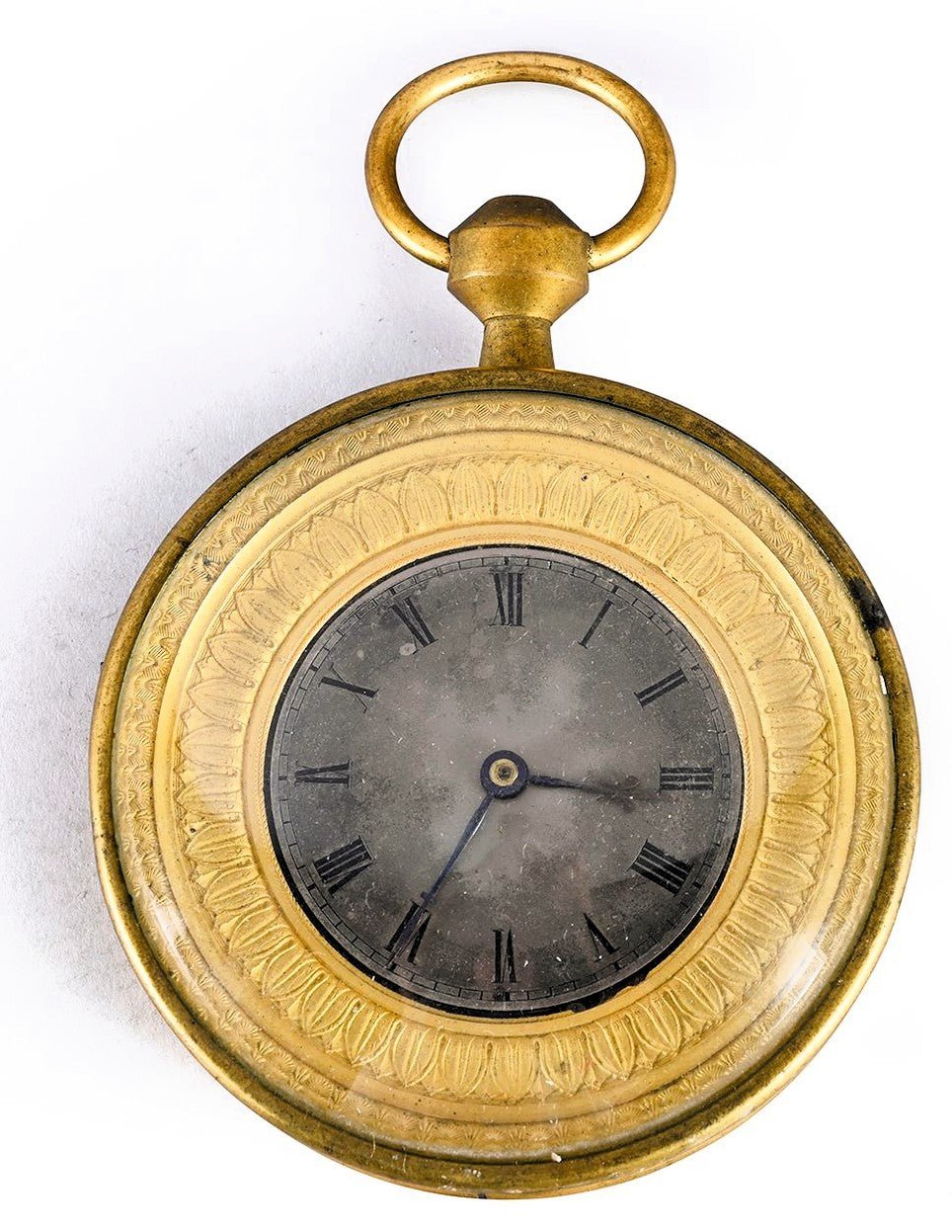An extremely rare, museum-quality artifact of horology from one of its absolute masters: a carriage clock with repeater by the court clockmaker Julien Le Roy.
The term "repetition" describes an extremely rare, innovative function for the era: the time, or rather its hourly chime, can be called out at any time – especially at night while traveling – by means of a chain leading out of the case.
Here, the masterful hand and skill of the court clockmaker Le Roy are already evident: In 99% of all coachmen's clocks of this era, the repeater is simply triggered with a thread or string.
Not so with this artifact: the master watchmaker Le Roy specially crafted a chain by hand with approximately 40 links, each only 2mm long and 1mm wide, to trigger the repeater mechanism. This chain, via a pulley, activates the repeater mechanism.
Video of the repetition: www.youtube.com/shorts/oRjcCuBHoDg
Julien Le Roy was a French master watchmaker and court watchmaker to the French royal family, and the most successful and renowned member of the legendary Baillon watchmaking dynasty. Each of his surviving artifacts represents a piece of watchmaking history.
Original works by Julien Le Roy in Paris can be seen in the world's most important museums: the Louvre in Paris, the Metropolitan Museum in New York, and the Palace of Versailles.
Solid, round brass case, case diameter a substantial 10cm, weighing approximately 700g.
Silver dial with engraved and blackened Roman numerals, gilt kyma relief band, hour and minute hands, black blued steel hands with hand-forged decorations at the tips
Gilt full-plate movement with finely crafted balance bridge and repeater function for the hour and minute strike via chain drive. Movement inscribed and signed Julien le Roy Paris.
A chime coil with a chain drive surrounds the movement for the repeater mechanism. The repeater currently functions for hours and minutes, but not correctly. On the hour strike, it always strikes 12 times, regardless of the hand position; sometimes it triggers fully – with both the hour and minute strikes – and sometimes only a few hour strikes.
The repeater function therefore requires attention/adjustment/repair; we don't tinker with such a historical artifact, especially not with the delicate chain winder. The YouTube video proves that the repeater was fully functional during filming today.
The spindle drive of the museum artifact sometimes starts, sometimes it doesn't; sometimes it runs for two or three hours before stopping, sometimes only for a few minutes (accuracy not tested). The movement is therefore definitely complete and functional, but needs cleaning. The hour and minute striking mechanism and its activation have been tested.
A unique artifact of watchmaking history, the likes of which probably only come onto the market once a decade, fully signed and in working order, and also featuring a super rare repeater/hour strike with chain drive (quarter repeater).
EZ: 1 - 2 : excellent condition for its age with barely noticeable signs of age or use, sometimes starts, repeater works but is misadjusted and needs to be adjusted, movement does not always start and never runs continuously - needs cleaning!
Life
At the age of thirteen, Le Roy built his first clock . In the same year (1699), he moved to Paris to apprentice. In 1713, he earned his master craftsman's title , and in the following years, he became a juré of the Parisian Clockmakers' Guild . Le Roy then became director of the Société des Arts de Genève , and in 1739, he was appointed Court Clockmaker ( Horloger Ordinaire du Roi ) under Louis XV . Le Roy ran his workshop on the Rue de Harlay on the Île de la Cité in Paris until his death.
Examples of his watches can be found in various museums around the world, e.g., in the Louvre and the Victoria and Albert Museum .
His son Pierre Le Roy continued the workshop, invented the adjustable mass screws on the balance wheel and also became a royal court clockmaker.
Another son, Julien-David Le Roy , was a neoclassical architect and archaeologist and author of Ruines des plus beaux monuments de la Grèce (1758), Histoire de la disposition et des formes que les chrétiens ont données à leurs temples (1764) and la Marine des anciens peuples expliquées, etc. (1777). The two remaining sons were Jean-Baptiste (state geometer at the Paris Academy from 1751) and Charles Le Roy (doctor), both of whom wrote articles for the Encyclopédie ou Dictionnaire raisonné des sciences, des arts et des métiers by Denis Diderot and Jean-Baptiste le Rond d'Alembert













































